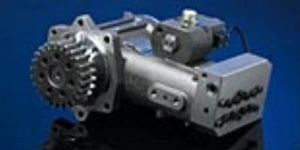
Fuel injector for gas turbines
Add to favorites
Compare this product
Characteristics
- Options
- fuel, for gas turbines
Description
As components of pump-line-nozzle injection systems, conventional fuel injection valves ensure that when a defined opening pressure of the fuel supplied by the injection pump is exceeded, the fuel is injected very quickly in a uniform fine atomisation.
Here not only a precise begin of injection is very important but also fast closing at the end of the injection process. Proper static and dynamic design of the injection hydraulics prevents so-called needle shocks. This reliably prevents even very minor unintended post-injection with after-dribbling effects, something that is necessary to ensure smokeless engine operation.
During the injection process itself, optimum atomisation is particularly important. Very fine spray-hole intake geometries ensure a small droplet size distribution with a high spray impingement. This ensures optimum combustion with good volumetric efficiency and low fuel consumption. In addition, the even droplet size distribution in the engine combustion chamber prevents localized low excess air ratios, thus reducing the level of air pollutants. For many decades, our conventional fuel injection valves have undergone permanent further development relating to these key parameters. This results in high standards in terms of functional behaviour, wear and service life.
We have also developed multifunctional valve systems based on this product family which allow our customers to supply several types of fuel to the combustion chambers of their engines in parallel, under optimised conditions for each. These valve systems are based on multi-needle nozzles and offer maximum flexibility for engine operation.
Catalogs
No catalogs are available for this product.
See all of L'Orange‘s catalogsRelated Searches
*Prices are pre-tax. They exclude delivery charges and customs duties and do not include additional charges for installation or activation options. Prices are indicative only and may vary by country, with changes to the cost of raw materials and exchange rates.



